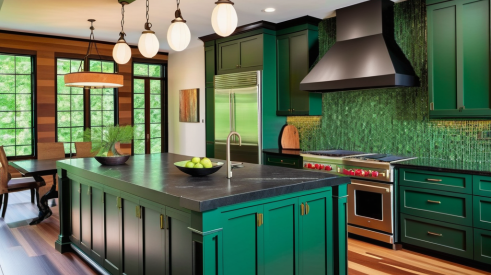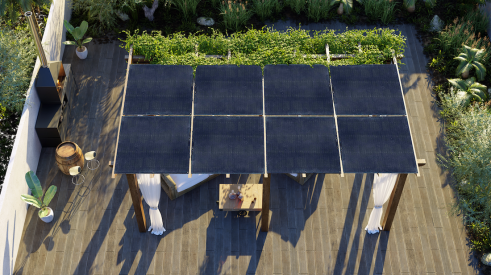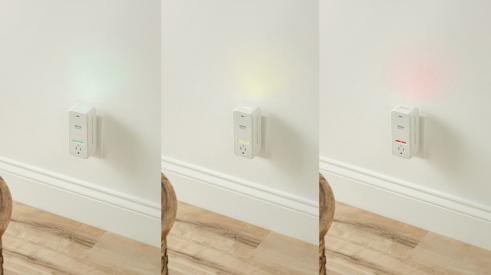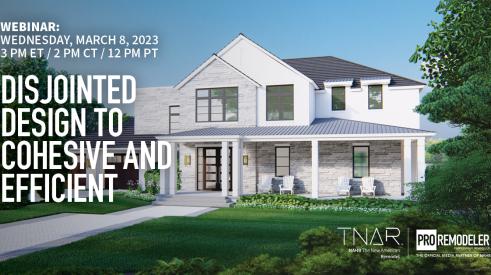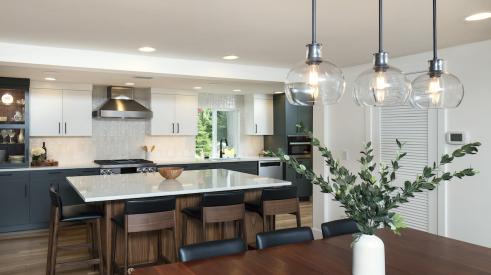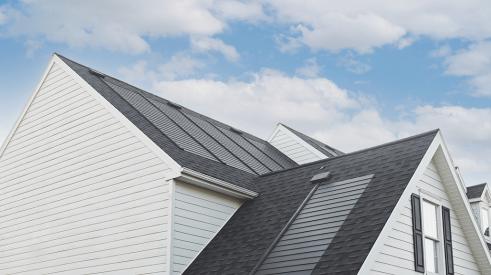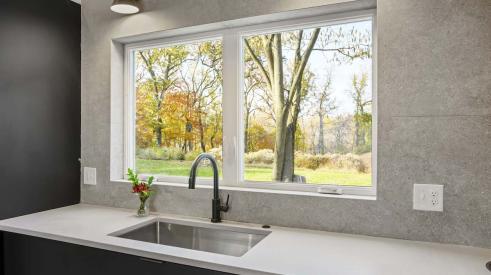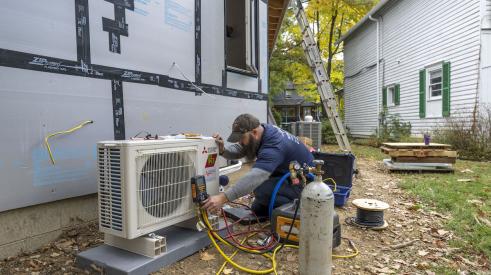Low-emissivity coatings were a quantum leap in window technology. Thanks to this innovation, the average double-pane window is now twice as resistant to cold or heat as it was in 1980. Even so, windows remain gaping energy wounds. For small projects, the ticket is to upgrade with windows that are tuned to climate and orientation — and install them properly.
Tuning windows takes effort. It means selecting different windows for different orientations. When a remodel involves a change in footprint, the prescription is two-fold: optimize windows for passive heating, cooling and lighting, and — here's the hard part — minimize their use for other purposes.
Robert Clarke founded Boulder-based Alpen Energy in 1981, on the heels of Low-E glass. In 2007, BuildingGreen.com selected his windows as a "Top-10 Product." In the table below, Clarke describes windows of today and tomorrow.
| Window Component | State-of-the-Art | The Future |
| Glazing | Ultra-thin metallic coatings on glass/films via vacuum sputtering | Dynamic coatings that change properties in response to light, heat or the turn of a dial |
| Glazing package | Sandwich of 2 Low-E panes and clear film filled with argon, krypton or zenon gas; 99.5% UV blockage; R-14 | Incremental improvements to achieve R-20 (same as 2 by 6 wall) |
| Window frame | Pultrusion fiberglass frame with hollow or foam core; R-4 to R-8 | R-10 performance via deeper windows for 2 by 6 framing, better seal between frame and sash and aerogel core |
| Flange to wall connection | Enhanced connection geometry, molded returns and zero expansion foams | ½-inch R.O. gives way to computer matching of windows to SIP panels and tight, pre-engineered Z flanges |
Energy Star ratings to change?
Colorado green architect John Van Doren notes, "Most 'high-quality' windows in the U.S. are fashion statements, falling far short of the performance of European and Canadian windows." Recognizing this, the Department of Energy is revising its Energy Star ratings. Among the changes that could go into effect in 2009:
- A much lower U-factor and a minimum SHGC (for winter heat gain) in northern zones
- A much lower SHGC in southern zones
- SHGC/U-factor trade-offs to expand the range of products
- Establishment of installation procedures to ensure performance
- Exploration of emerging technologies
Meanwhile, Van Doren says, get the lowest U-factor possible. His selection process starts with these rules of thumb on SHGC:
- Use the building code in Department of Energy proposed climatic zones 1, 2 and 3A-B
- In zones 3C and 4, use an SHGC greater than 0.65 on south walls only
- In zones 5-8, use an SHGC greater than 0.65 on all exposures
Picking the right window not easy
 |
Constructing a Low-E window begins by bonding an ultra thin layer of metal or metallic oxide on glass or plastic. This lowers the U-factor by reducing radiant heat transfer. Some coatings are "spectrally selective" — reflecting or admitting segments of the UV spectrum. As coating, glazing, and framing options expand, the selection process becomes more confounding. Further complicating the picture:
- The National Fenestration Rating Council describes energy performance via U-factors (insulating value) and SHGC (amount of heat transmitted). Figuring out the best combination requires interpretation. Too often, it's done incorrectly.
- Although Americans consume far more energy for heating than cooling, there's a bias in IECC, LEED and the Energy Star program toward minimizing AC loads. That makes it hard to find Low-E/high SHGC windows for passive solar heating.
Design tools:
http://www.efficientwindows.org/selection.cfm
http://www.sbicouncil.org/store/index.php
http://windows.lbl.gov/software/resfen/resfen.html
http://susdesign.com/overhang/
Good overall window sites:
http://www.efficentwindows.org
http://www.nfrc.org/
To e-mail ideas or comments to the author Click here.
Information on choosing green for your projects
Add new comment
Related Stories
Working Toward Affordable, Resilient Homes
A new natural disaster protection act from NAHB aims to support hazard mitigation projects
Client Design Choices in the Time of Social Media and AI
Social media speeds up the trend cycles, and now artificially created images are falling into homeowners' hands
Indoor Air Quality Gets Smart
A home's air quality can now be cloud connected and fully automated with this innovative product
Webinar: From Disjointed Design to Cohesive and Efficient—The New American Remodel 2023
Access the recording for the first The New American Remodel webinar held on March 8 at 2 pm CT
5 Standout Energy-Efficient Products Spotted at IBS 2023
See what this green remodeler recommends from the show floor
Innovative Products: GAF Energy Timberline Solar Shingles
GAF Energy’s latest innovation has taken the solar world by storm
Detailed Design: Benefits of Biophilism
See the details our Model ReModel contractors chose to infuse nature into their ADU
Heat Pumps Now Required in Washington New Construction
Washington is the second state to require heat pumps in an effort to electrify homes




